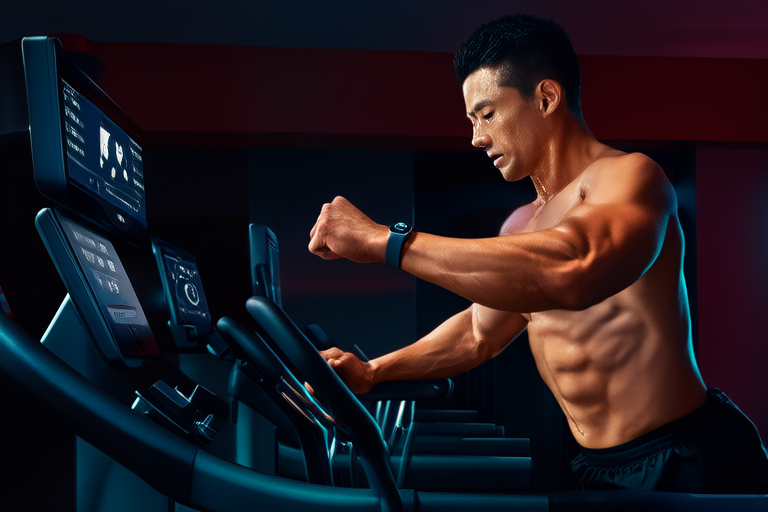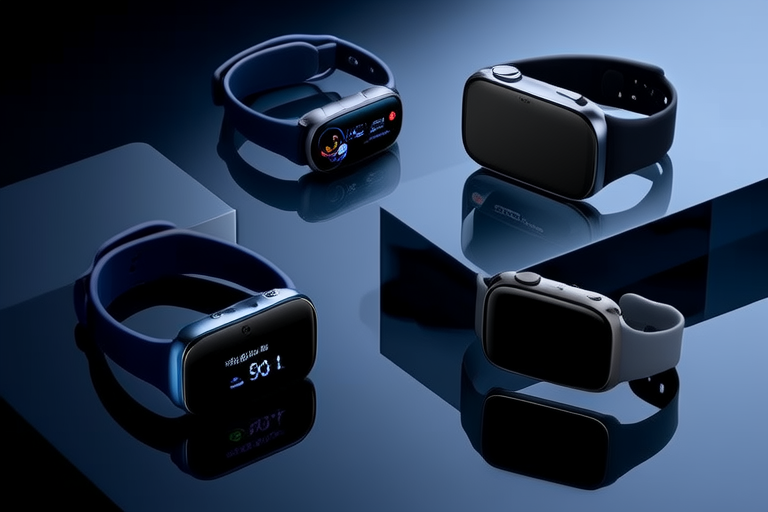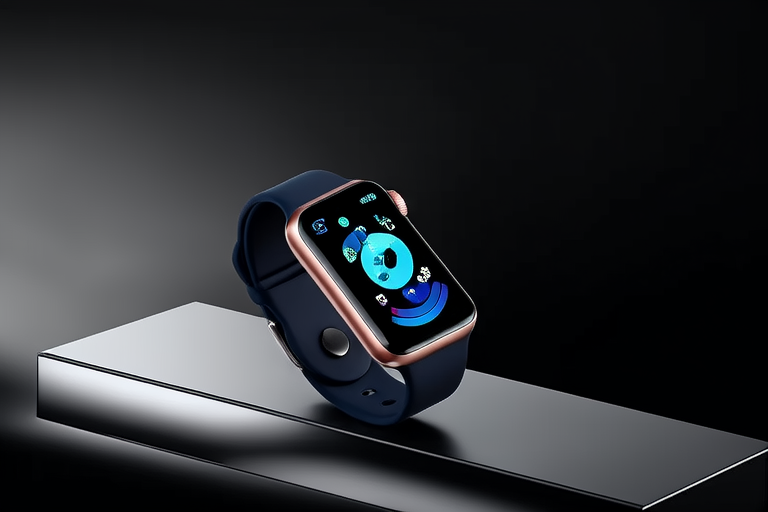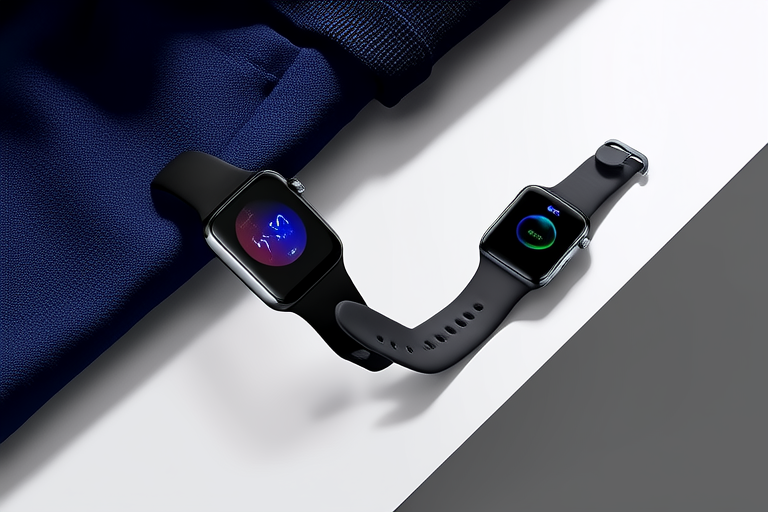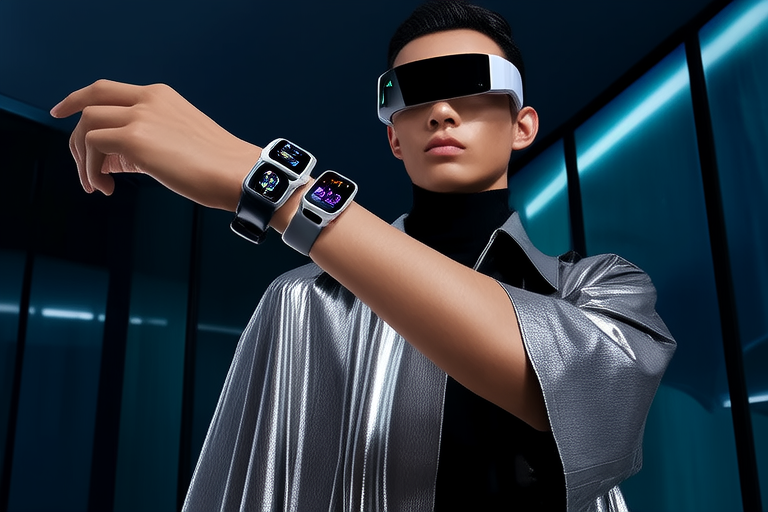“`html
The Future of Fitness: How Wearable Devices Are Revolutionizing Health Tracking
Introduction:
The world of fitness has undergone a significant transformation with the advent of wearable devices. These small, portable gadgets have become increasingly popular due to their ability to track various aspects of our health and fitness in real time. From heart rate monitors to sleep trackers, wearable devices offer a wealth of information that can help individuals better understand their bodies and make informed decisions about their health. As technology continues to advance, these devices are becoming more sophisticated, offering not only convenience but also the potential to revolutionize healthcare. This article explores how wearable devices are transforming the way we track health and fitness, from personal fitness to preventive care and integration with healthcare systems.
Key Features of Wearable Devices:
Modern wearable devices come equipped with a range of features designed to provide comprehensive health and fitness data. Heart rate monitors, step counters, and sleep trackers are among the most common features found in these devices. For instance, the Apple Watch and Fitbit are popular choices that offer detailed insights into your daily activities. These devices can accurately measure your heart rate, steps taken, calories burned, and even monitor your sleep patterns. Additionally, some wearables incorporate GPS technology, allowing users to track their running routes and cycling paths with precision. The integration of these features contributes to more accurate and personalized health data, enabling users to gain deeper insights into their overall wellbeing.
Take the Garmin Vivosmart, for example. It offers a wide array of functionalities, including continuous heart rate monitoring, sleep stage tracking, and stress management tools. Another notable device is the Samsung Galaxy Watch, which provides advanced fitness tracking capabilities, such as VO2 max estimates, body composition analysis, and hydration reminders. These features not only enhance user experience but also promote healthier lifestyles by encouraging regular physical activity.
Impact on Personal Fitness:
Wearable devices play a crucial role in motivating individuals to lead more active lives. By providing real-time feedback on physical activity levels, these gadgets help users stay engaged and committed to their fitness goals. Many wearables include goal-setting features that allow users to customize their objectives based on their individual needs and preferences. For example, if you aim to walk 10,000 steps per day, your device will remind you when you’re falling short and encourage you to keep moving.
Moreover, these devices often incorporate gamification elements, such as virtual rewards and leaderboards, to increase user engagement. Social integration features enable users to share their progress with friends and family, fostering a sense of community and competition. This collaborative aspect can be particularly effective in maintaining motivation over time. For instance, the Strava app allows cyclists and runners to connect with others who share similar interests, creating a supportive network that encourages consistent participation.
Health Monitoring and Preventive Care:
Wearable devices have the potential to detect early signs of health issues, making them valuable tools for both individuals and healthcare providers. Continuous heart rate monitoring can identify irregularities like arrhythmias, while sleep tracking can reveal sleep disorders such as apnea. In some cases, these devices can even alert users to potential problems before they become serious. For example, certain wearables can detect changes in resting heart rate that may indicate an underlying condition requiring medical attention.
The role of wearables in preventive care is particularly promising. They can assist in managing chronic conditions by providing ongoing monitoring and timely interventions. For instance, diabetic patients can benefit from glucose monitoring wearables that continuously track blood sugar levels, helping them adjust their diet and medication accordingly. Similarly, people with hypertension can use blood pressure monitors to keep tabs on their readings throughout the day, ensuring they stay within safe limits.
However, it’s essential to address concerns regarding data privacy and security. With sensitive health information at stake, ensuring that this data remains confidential and protected against unauthorized access is paramount. Companies must implement robust encryption methods and adhere to strict data protection regulations to safeguard user privacy.
Integration with Healthcare Systems:
Wearable devices are increasingly being integrated into healthcare systems to improve patient outcomes. Collaborations between tech companies and healthcare providers are paving the way for innovative solutions that leverage the power of wearable technology. For example, hospitals and clinics are adopting remote patient monitoring systems that utilize wearables to keep track of patients’ vital signs from afar. This approach not only enhances patient convenience but also reduces the burden on healthcare facilities.
Telemedicine services are another area where wearables are making a significant impact. Patients can consult with healthcare professionals via video calls while wearing devices that transmit real-time health data. This enables doctors to make more informed diagnoses and treatment plans based on up-to-date information. Furthermore, wearable devices can facilitate better communication between patients and caregivers, promoting more proactive approaches to healthcare.
Challenges and Future Prospects:
Despite their numerous benefits, wearable devices face several challenges. Accuracy remains a concern, especially when it comes to measurements like calorie expenditure and sleep quality. Battery life is another issue, as frequent charging can be inconvenient for users. Additionally, widespread adoption requires overcoming barriers such as cost and ease of use.
Looking ahead, future advancements in wearable technology promise even greater improvements. More advanced sensors could provide more precise data, while longer-lasting batteries would enhance user convenience. Seamless integration with other smart devices, such as smartphones and home assistants, could further streamline the user experience. Ethical considerations surrounding the use of wearable health data will also need careful attention as these technologies become more prevalent.
Conclusion:
In summary, wearable devices are transforming the landscape of personal fitness and healthcare. Their ability to provide real-time health tracking, combined with features like goal setting and social integration, makes them powerful tools for promoting healthier lifestyles. As these devices continue to evolve, they hold the potential to revolutionize preventive care and healthcare delivery. While challenges remain, the future looks bright for wearable technology, promising a more connected and personalized approach to health management.
The future of health tracking technology is undoubtedly exciting, and wearable devices are at the forefront of this revolution. As we move forward, it’s important to embrace these innovations while remaining mindful of the ethical implications and ensuring that everyone has access to the benefits they offer. With continued development and collaboration, wearable devices will undoubtedly play an increasingly vital role in shaping the future of fitness and healthcare.
“`
